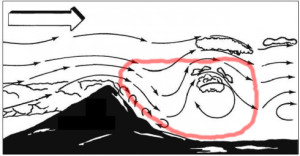A few years ago I found the best headphones I’ve ever heard, the Audeze LCD-2. These are the 2014 Fazor version. A while later I made them even better with a subtle parametric EQ. That may sound like sacrilege to some audiophiles, but it works for me. The LCD-2 has enhanced my late-night music listening and I still enjoy and use them regularly.
Since then, Audeze came out with another headphone: the LCD-X. It is designed to have a more neutral (flatter) frequency response and faster/cleaner transient response. Both of these claims are substantiated by measurements. But how do they sound? I wanted to find out. Audeze had a sale so I ordered a pair to get a listen.
Dimensionally, the X are exactly the same as my 2, or so close I couldn’t tell the difference. They’re black and made of metal, where the 2 are wood. The X are a bit heavier, but I didn’t feel the difference. Clamping force, fit, they felt exactly the same on my head.
I ran the comparison through my Behringer DEQ2496. More precisely, CDs played on my Oppo BDP-83, toslink to DEQ2496, toslink to Oppo HA-1, balanced headphone out. The DEQ2496 enabled me to level match within 0.5 dB, keeping the signal otherwise unchanged, or apply EQ as mentioned below. This doesn’t use the DEQ2496’s DA or AD converters; it operates in pure digital mode. Subjectively, I found the X to be 8.5 dB louder than the 2, so used this to equalize the levels.
Tech note: According to specs the X is about 11 dB louder than the 2 at the same volume setting. According to Audeze specs, the X makes 103 dB with 1 mW of power and has a 20 ohm impedance. Since it’s planar magnetic, the impedance is flat vs. frequency. That means 0.1414 V (141 mV) will make 103 dB, so 0.0317 V (32 mV) will make 90 dB. The voltage sensitivity of the LCD-2 is 0.114 V @ 1 kHz @ 90 dB. So we have 20*log(0.141/0.032) = 12.9 dB. My subjective impression was slightly different. Attenuated by 13 dB, the X was quieter than the 2; I used 8.5 dB.
First I did the fair comparison: head to head, no EQ. Here it was no contest: the X was easy to differentiate, and overall better sound:
- X has more upper mid – less of the 2’s dip
- X has wonky voicing – something uneven in the mid to treble response
- X bass is slightly (about 2dB) quieter, but just as flat and deep
- X has slightly better bass clarity
- X has more linear and extended treble
- X sounds “cool”, not “warm” like the LCD-2
- Detail: X is on stage with the musicians, 2 is in the 5th row back
- The X has more detail than reality; the 2 has less than reality; neither is perfect but the X is closer
However, I don’t listen to my 2s straight. I apply a parametric EQ: +4 dB @ 3800 Hz, Q=0.67 (4 dB / octave, 2 octaves wide). This counteracts the 2’s softness in the upper mids and lower treble, giving it a more neutral response curve and a bit more detail as if you’re sitting a few rows closer to the stage.
So next I did the realistic comparison: how I would actually listen to them: X raw, versus 2 with the above EQ:
- They sound almost the same
- X emphasizes the overtones, but still has the core sound
- 2 favors the core sound, but still has the overtones
- X is slightly more clear, yet less realistic, uneven voicing on some recordings
- 2 has more realistic voicing on most recordings, yet slightly less clear
- 2 is on the warm side of reality, X is on the cool side
- Overall, which sounds better depends on the recording
Here it was a much harder decision. I also compared them to my speakers. They were about equally close to that sound, yet approaching it from opposite sides. These are both excellent headphones and I could be happy with either. They wipe the floor with any conventional dynamic headphone I have ever heard. If I didn’t already own the 2, or if I didn’t have a digital parametric EQ, I would pick the X. But I do already own the 2, and with the parametric EQ they are just as good as the X. I listen mostly to acoustic music and the 2’s realistic voicing is more important to me than the X’s extra 1% of detail. So why change anything?
I kept my LCD-2F and returned the LCD-X thanks to Audeze’s excellent service which includes a 30 day trial period. It was a fun experiment and satisfied my curiosity. While I kept my LCD-2F, I can heartily recommend the LCD-X to anyone who wants a fantastic set of headphones with dynamic and detailed yet realistic sound.
Addendum: In 2016 Audeze improved the LCD-2 drivers, making them thinner and lighter with better transient response, and improved reliability. The frequency response is unchanged. I upgraded my LCD-2 to these new drivers, now I have the best of both!
PS: a few years after I made this comparison, DIY Audio released reviews of these headphones. Their FR measurements correlate to some of my subjective observations above: namely the LCD-X has (1) low bass slight lower in level, and (2) uneven response from mids to treble.
